
Trip Report: 20070508
We had a good stay in Newport. It is a nice town with a big harbor and nice views. We nearly missed dinner due to assuming that since it was a "tourist town" that the restaurants would be open past 9pm. Wrong. But, we were able to find a nice family-owned Mexican restaurant and we had crab enchiladas. They were great. Next morning, we awoke to thick fog, strong winds and substantially colder temperatures. This was in direct contract to the previous day so we were not too happy about that. But, inside the car, the temperature is nearly constant, but having better visibility would have been nice for taking photographs. We found a great little restaurant near the marina where we could watch the fishing boats load and unload. After we ate, we headed out on highway 101 again, due south. Our destination for the day was Crescent City, CA. Our path would take us the full length of the Oregon coast. The photos below are what we saw.

We ate at the docks on Yaquina Bay. These are active duty fishing boats. While we watched, a number of boats were being loaded and unloaded as part of normal business. The sky was overcast making photography difficult.
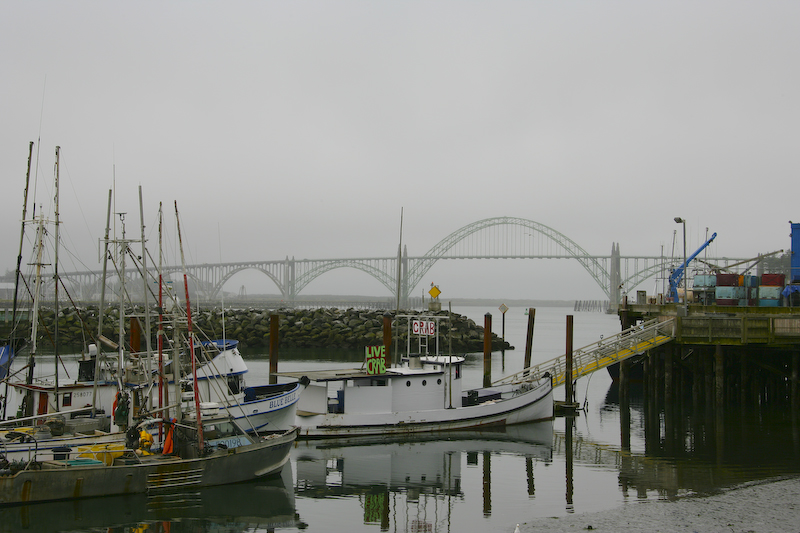
Yaquina Bay is large and a large bay requires a large bridge. There were a number of large bridges on our route, but this was one of the biggest.
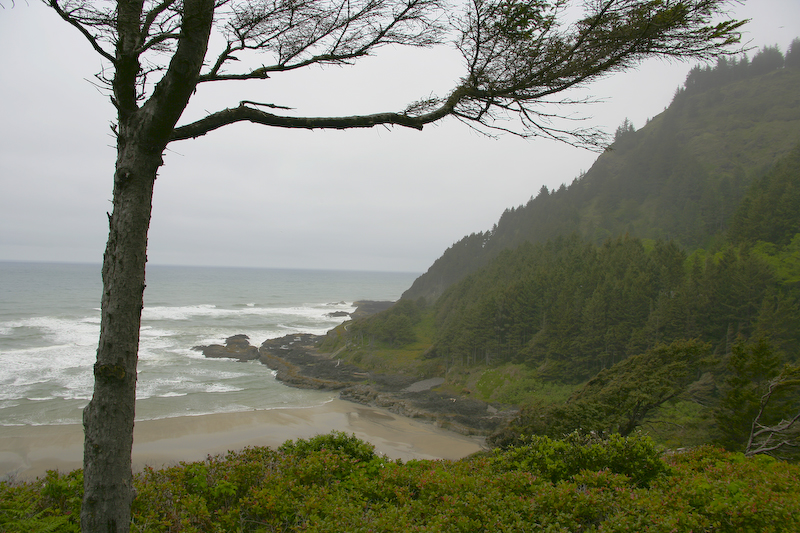
The Oregon coast has large cliffs and "headlands" that made building roads difficult and costly. But, these headlands also make for great viewpoints and awesome vistas of the rocky coast. This view is from the Cape Pepetua overlook.
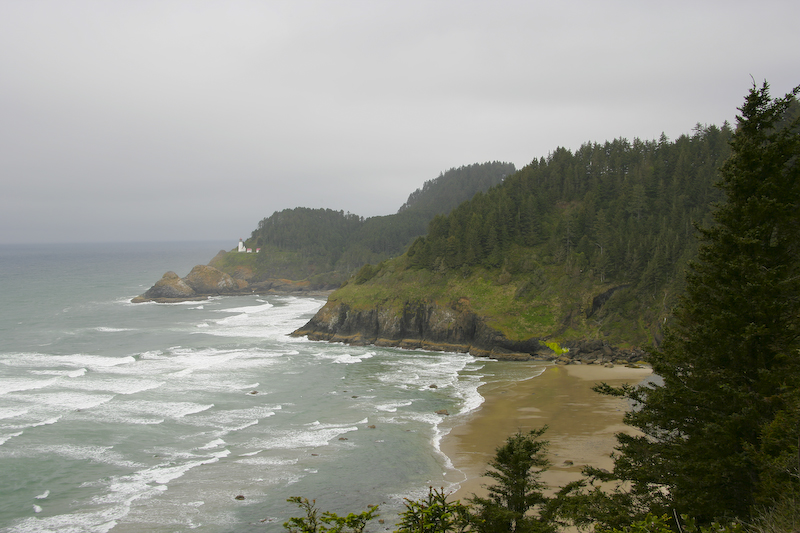
Because the coast is so rocky, there were many lighthouses to assist maritime navigation. This lighthouse is situation on one of the many "heads" on the coast.
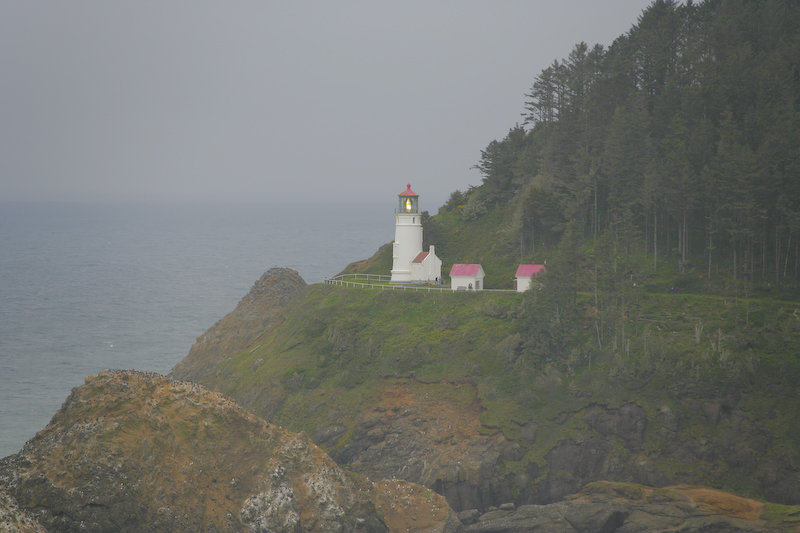
The majority of these lighthouses are still in active service today. The photo above as taken when the light was pointed in my direction.
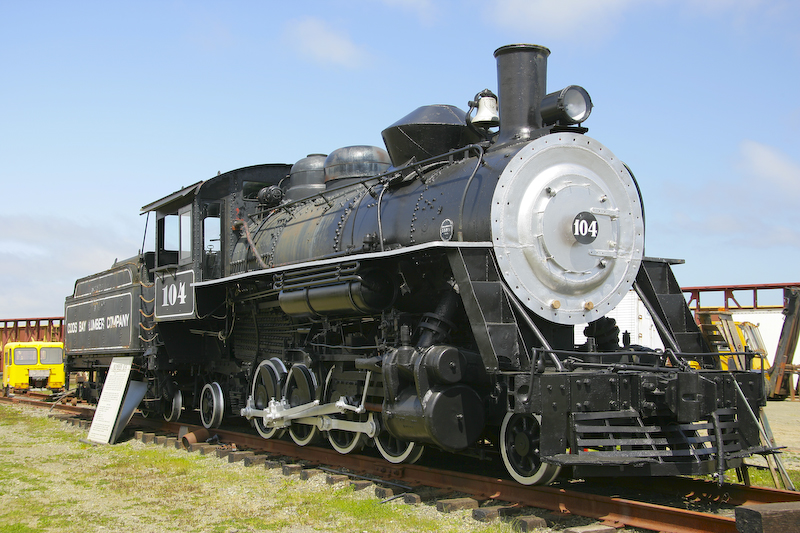
As we were making our way south on 101, we stopped for lunch in Coos Bay, OR and noticed this old steam loco at a park across the street. Number 104 was built by the Baldwin Locomotive Works for the Coos Bay Lumber Company in 1922 and was in active logging service from 1923 - 1954. This loco was capable of hauling up to 100 fully loaded cars and had a tractive force of 27,800 pounds. No. 104 weighed 145,000 pounds and the tender car weighed another 97,000 pounds. Like all locomotives of this era, it used high pressure steam to derive power. But, unlike earlier models, No. 104 was oil fired. Locos of this style were common throughout the west.
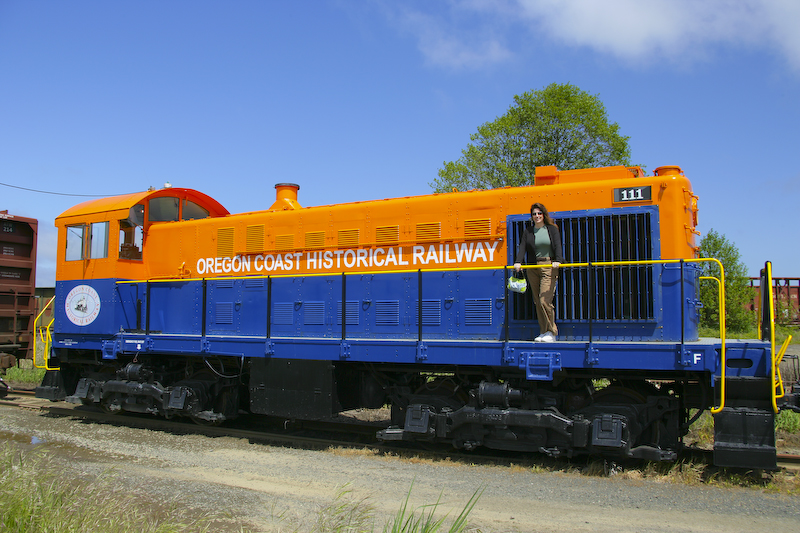
The museum in Coos Bay also had this diesel-electric loco that was donated by International Paper. This fellow is in good repair and very clean. Here, Kathleen inspects the equipment.

A view of the rocky headlands south of Port Orford, OR.
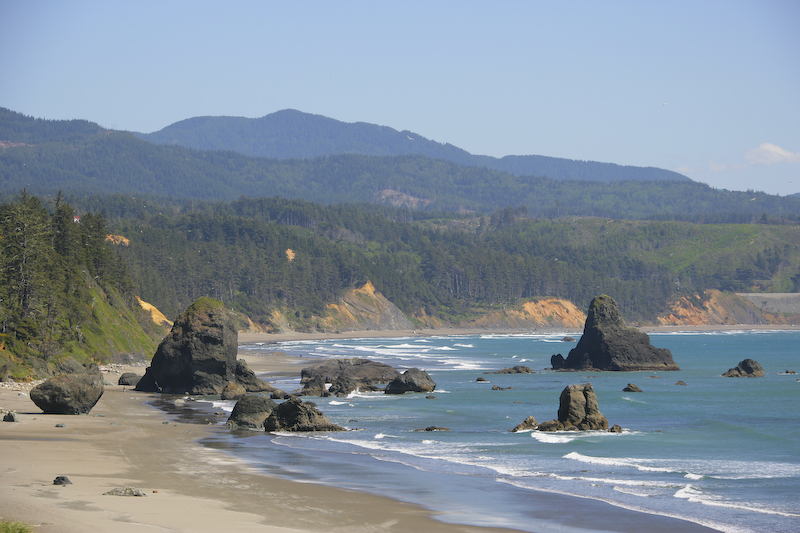
The coast has many areas with large submerged rocks next to the shore, making shipping in these waters hazardous.
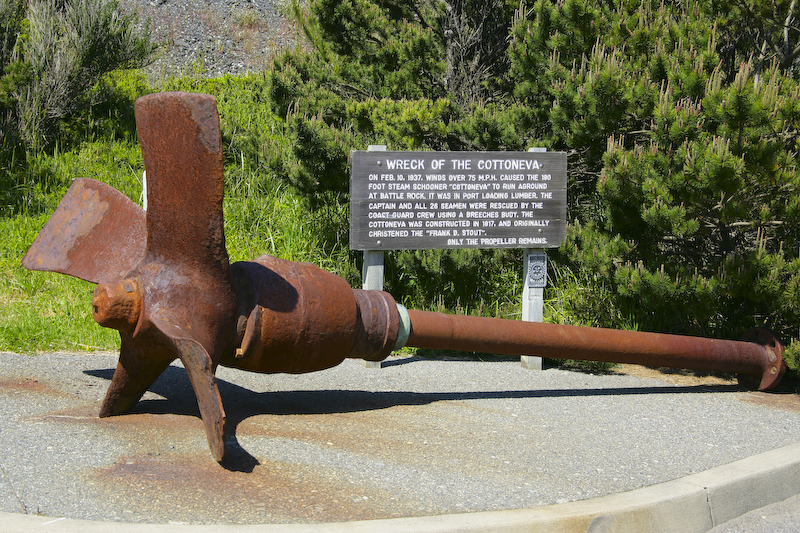
Speaking of shipping hazards, when we were at Port Orford, the wind was howling, perhaps 40 mph. The locals said that high winds are common in that area then we saw this monument to a steamer sunk in 1937 by high winds. The winds drove the ship onto the rocks and the entire crew had to be rescued. This propeller and shaft is all that remains of that 180 foot ship.
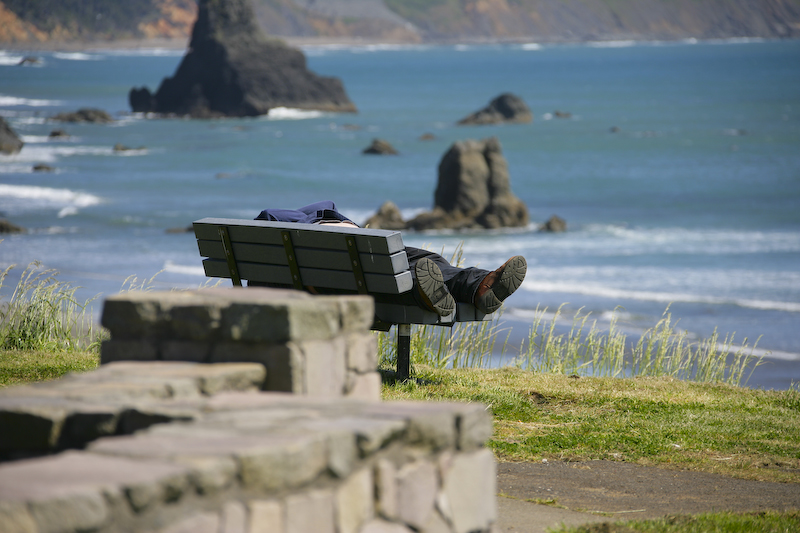
At Port Orford, we spotted this fellow passed out on the bench. He HAD to be drunk as no person in a normal state of mind could have fallen asleep in the high winds. It was just too loud to sleep unless "chemically assisted".
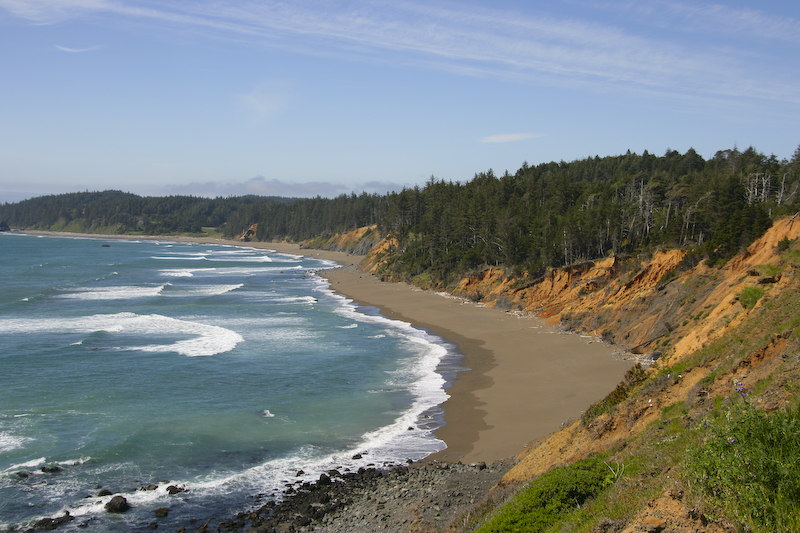
Some of the headlands provided sheltered coves with nice beaches.
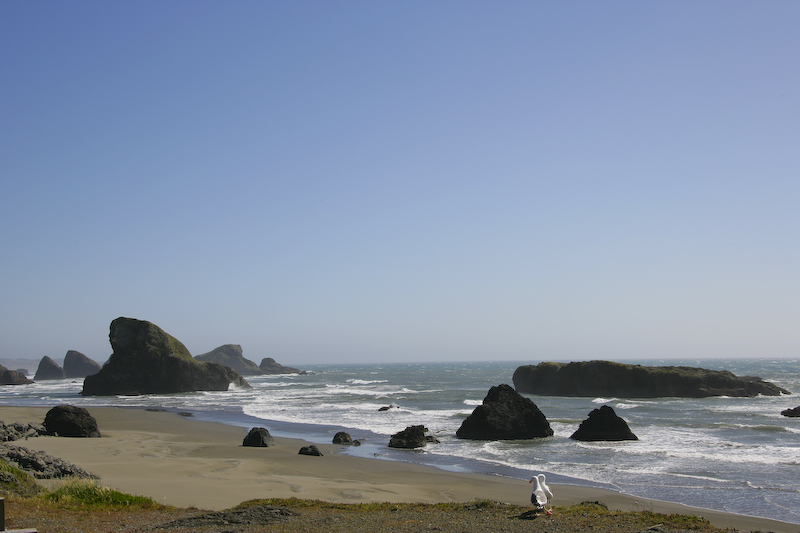
South of Port Orford, the headlands disappeared, but the offshore rocks and submerged hazards remained. South of where this shot was taken, we spotted wind surfers doing their thing in the cold waters.
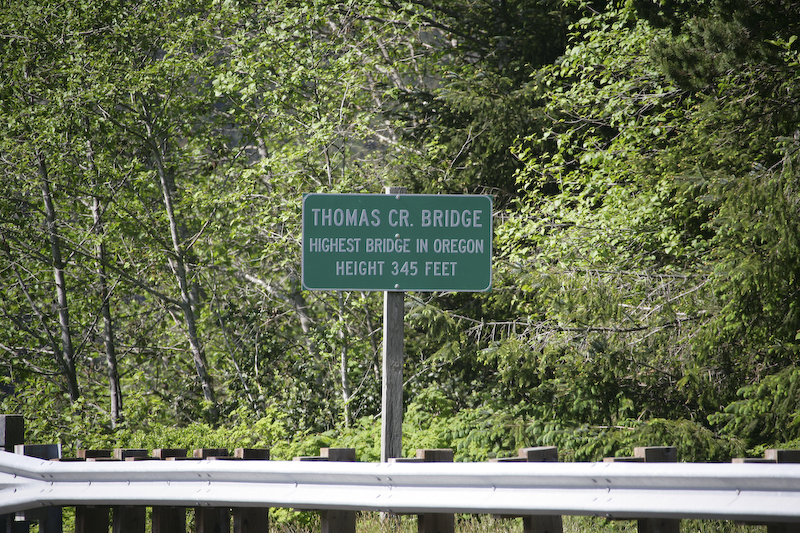
I spotted this sign on along the road and just had to stop.
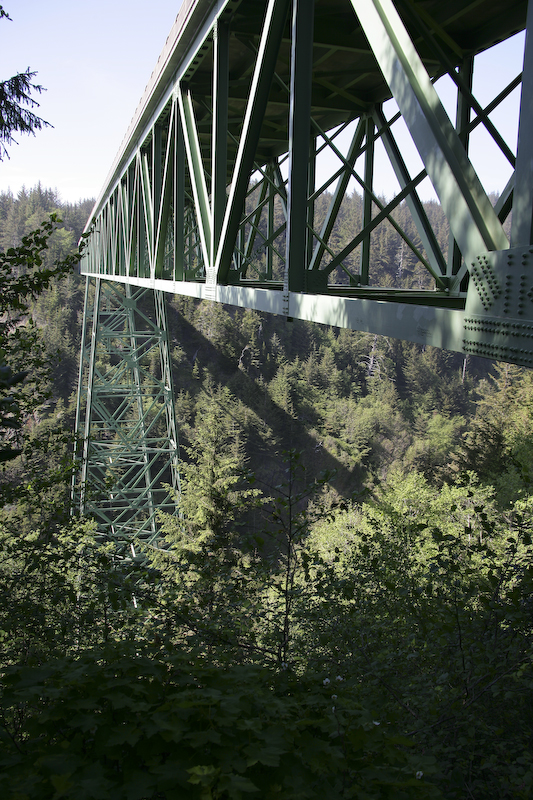
I had to hike quite away's through the brush to get this shot. This was indeed an impressive piece of engineering.
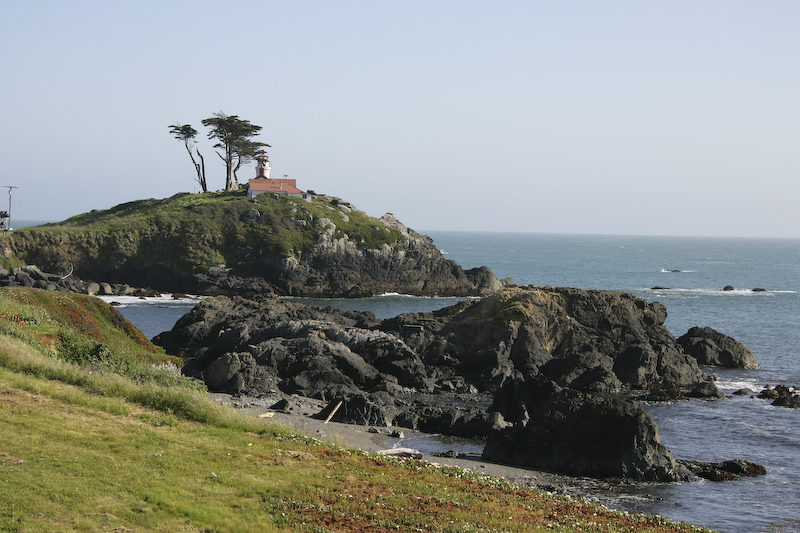
We finally arrived in Crescent City and managed to get a hotel right on the coast. This is a view of the Crescent City lighthouse as seen from our balcony.
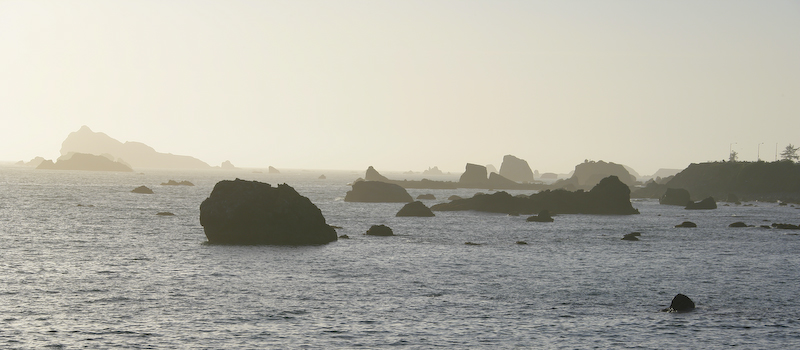
The setting sun profiled the many large rocks just off the shoreline. These rocks are an ever-present danger to the fishing fleets that operate in these waters.
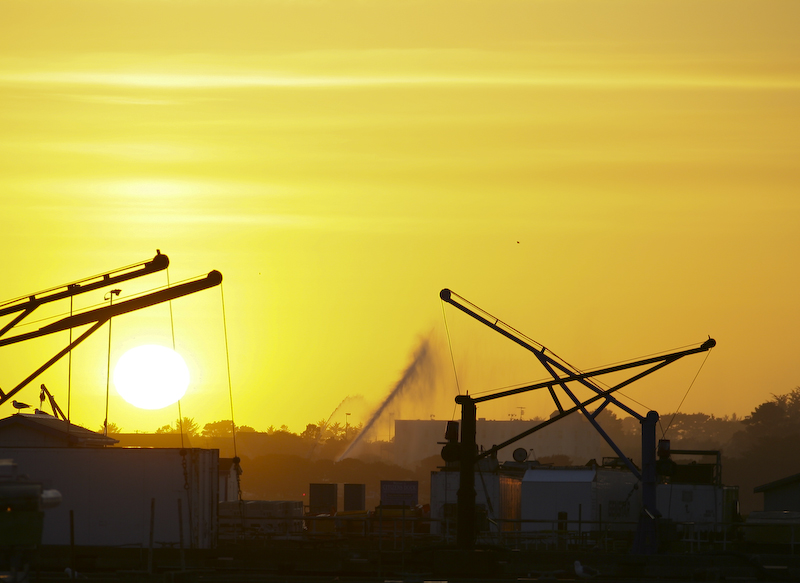
As we traveled to dinner, we passed a number of fire trucks going to the local park. I suspected that they were going for some kind of practice or equipment certification and was later proven correct. I stepped out of the restaurant to get a shot of the sunset, and by happenstance captured their practice. Note the water streams in the center of the photo.
This was a very nice drive. Traffic was light, but the high winds were annoying. Happily, the winds had mostly abated by the time we got to Crescent City. One of the interesting side notes is the large number of "tsunami warning" signs that we saw along the highway and in the small towns. The towns were learning from the hard lesson of Crescent City. Back in the sixties, Crescent City was literally washed away by a tsunami that came without warning. It destroyed the city, killing many people. Since then, the USGS has established a Pacific tsunami warning network and has coordinated with the cities that are in harm's way to form evacuation plans should another tsunami result from a distant earthquake. The quake that spawned the Crescent City disaster happened in Alaska, many thousands of miles away.
Back to the Road Trip Home Page